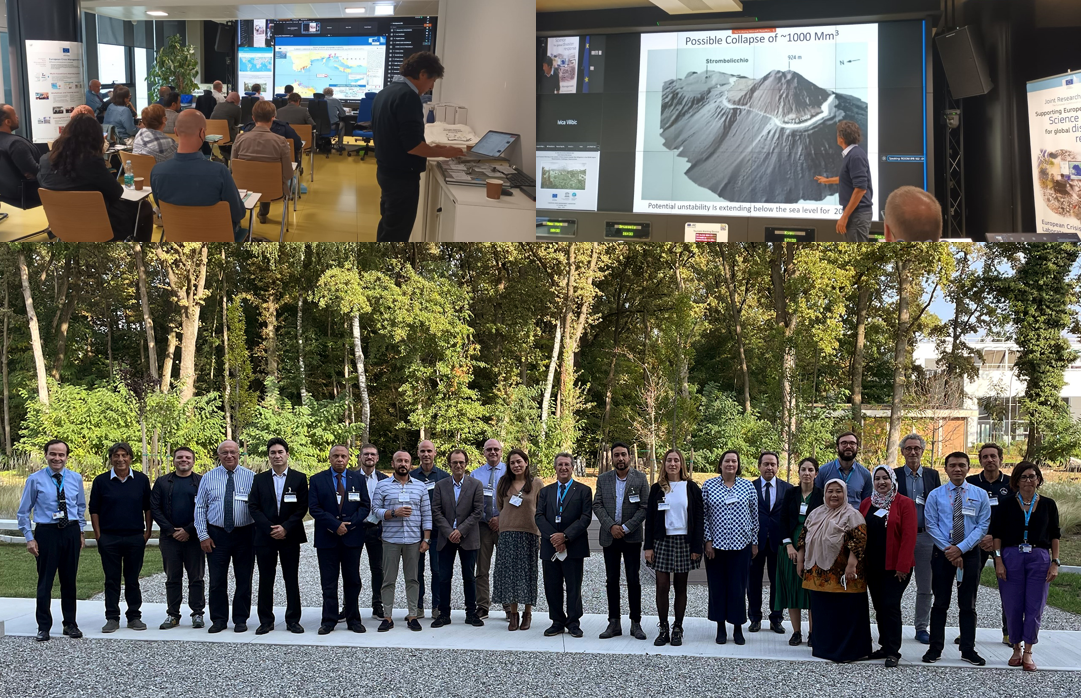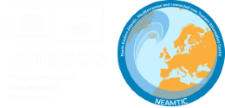Dialogue: How to holistically address requirements, challenges and opportunities of effective local tsunami warning in the multi-hazard disaster risk mitigation context
The European Commission's Joint Research Centre (EC-JRC), Directorate-General for European Civil Protection and Humanitarian Aid Operations (DG ECHO) and the UNESCO-Intergovernmental Oceanographic Commission (IOC) co-organized a hybrid-workshop on 4-5 October 2022 at EC-JRC Ispra, Italy. The workshop discussed on the requirements, challenges and opportunities of effective local tsunami warning in the multi-hazard disaster risk mitigation context including earthquake, volcano, and meteo-tsunami Early Warning Systems (EWS).
The workshop outcomes aim to support the development of an integrated, truly multi-hazard-oriented coastal community resilience policy brief for Europe, as well as the further development of the North-eastern Atlantic, the Mediterranean and connected seas Tsunami Early Warning and Mitigation System (NEAMTWS). Mr Öcal Necmioglu, Science Project Officer at EC JRC stressed that “making use of earthquake or volcano early warning systems for less than 1 minute tsunami warning has the potential to reduce the early-warning time drastically. In addition, such integrated and multi-disciplinary systems could provide a solid framework for their sustainability - also in terms of economic efficiency. Hence, we need to adopt a multi-disciplinary approach and promote such integrated systems to ensure the availability and the effectiveness of “last mile” multi-hazard early warning systems for enhanced coastal community disaster resilience”. Mr Denis Chang Seng, Technical Secretary of the Intergovernmental Coordination Group for the NEAMTWS, emphasised that “the joint workshop draws on important technical and operational questions discussed in the last two years within the ICG/NEAMTWS setting, concerning the development of national to local TEWS, and the initiative will help to address them’’.

From top to bottom and left right: EC JRC Crisis room; Maurizio Ripepe, University of Florence, Italy, presenting on the Stromboli Volcano TEWS; group picture of the workshop in person participants. Photographs credit: EC JRC (Group photo) and UNESCO.
A report on global Tsunami Early Warning Systems (TEWS) and remaining challenges was provided by Mr Bernardo Aliaga, acting Head of Tsunami Unit. He highlighted that “the community has gone a long way to build a solid early warning system in place for tsunami, but there are remaining challenges. The United Nations Ocean Decade Tsunami Programme (ODTP) will help address these challenges’’. A symposium is planned next year to help refine actions.
The workshop was also an opportunity to learn on the progress of the joint IOC-UNESCO and DG-ECHO CoastWAVE project; the operational status, key achievements, challenges and key lessons learned of Tsunami Service Provider (e.g. Istituto Nazionale di Geofisica e Vulcanologia, INGV, Italy) in the NEAM region and in the Indian ocean (Indonesian Tsunami Warning System, InaTEWS). Both INGV TSP (NEAM) and InaTEWS (Indian Ocean) are striving towards integrating local volcano detection and early warning systems, for example in Stromboli and Krakatau within the regional/national system to better detect, monitor and respond to non-seismic tsunami sources.
The workshop concluded that despite the advances in the upstream component of the TEWS, more efforts are required to accurately characterize tsunami sources and reduce uncertainties in tsunami warning, and holistically address requirements, challenges and opportunities of effective local tsunami warning in the multi-hazard disaster risk mitigation context by seeking synergies among different early warning systems and methodologies designed and operationalized for different types of natural hazards.
The workshop was attended by a total of seventy expert participants, thirty in person and forty in hybrid.
Report
The outcomes of the Workshop are summarised in the report provided by the EC-JRC, available at the following link:
https://publications.jrc.ec.europa.eu/repository/handle/JRC132369









































